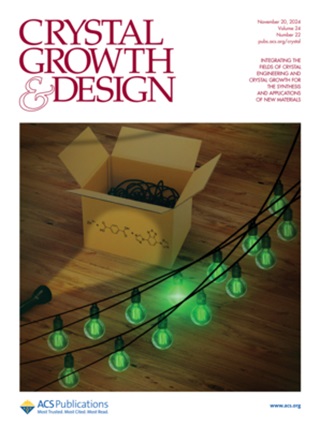用于高效分离氙和氪的稳健 fcu 型钇基金属有机框架
IF 3.4
2区 化学
Q2 CHEMISTRY, MULTIDISCIPLINARY
引用次数: 0
摘要
我们在此报告了一种 fcu 型微孔钇基金属有机框架,它能以较低的吸附热实现高效的 Xe/Kr 分离。该化合物名为 [Y6F8(DOBDC)6(H2O)2]-(DMA)2(HIAM-329,H2DOBDC = 2,5-二羟基对苯二甲酸,DMA = 二甲基铵),具有热稳定性和水热稳定性。在 1 bar 和 308 K 条件下,它对 Xe/Kr(20/80,v/v)的理想吸附溶液理论选择性为 10.04,Xe 吸附热低至 22.9 kJ/mol。柱突破测量证实了 HIAM-329 分离二元 Xe/Kr 混合物的能力。本文章由计算机程序翻译,如有差异,请以英文原文为准。

A Robust fcu-type Yttrium-Based Metal–Organic Framework for Efficient Separation of Xenon and Krypton
We report here an fcu-type microporous yttrium-based metal–organic framework showing efficient Xe/Kr separation with low heats of adsorption. The compound, formulated as [Y6F8(DOBDC)6(H2O)2]·(DMA)2 (HIAM-329, H2DOBDC = 2,5-dihydroxy-terephthalic acid, DMA = dimethylammonium), is both thermally and hydrothermally robust. At 1 bar and 308 K, it exhibits an ideal adsorbed solution theory selectivity for Xe/Kr (20/80, v/v) of 10.04, with Xe adsorption heat as low as 22.9 kJ/mol. Column breakthrough measurement confirms the capability of HIAM-329 for the separation of binary Xe/Kr mixtures.
求助全文
通过发布文献求助,成功后即可免费获取论文全文。
去求助
来源期刊

Crystal Growth & Design
化学-材料科学:综合
CiteScore
6.30
自引率
10.50%
发文量
650
审稿时长
1.9 months
期刊介绍:
The aim of Crystal Growth & Design is to stimulate crossfertilization of knowledge among scientists and engineers working in the fields of crystal growth, crystal engineering, and the industrial application of crystalline materials.
Crystal Growth & Design publishes theoretical and experimental studies of the physical, chemical, and biological phenomena and processes related to the design, growth, and application of crystalline materials. Synergistic approaches originating from different disciplines and technologies and integrating the fields of crystal growth, crystal engineering, intermolecular interactions, and industrial application are encouraged.
 求助内容:
求助内容: 应助结果提醒方式:
应助结果提醒方式:


